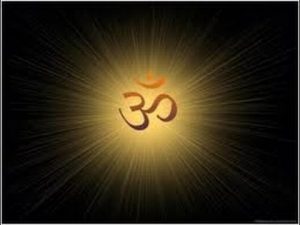
25 years of practice.
Rewind…October 1992.
A rainy day in New York City. I walk into the Jivamukti Yoga Center on 2nd Avenue and 10th Street. The walls of the yoga studio are purple. There is an altar with pictures of Ram Dass, the Beatles, Jesus, and almost every guru in every lineage of every eastern mystical tradion. The heavy scent of Nag Champa incense is in the air. I am transported from the chaotic streets of Manhattan into…I don’t know what. A familiar feeling of recognition and home in myself, a feeling that I am absolutely in the right place…and I have no idea why.
Since that day, I have been practicing and studying Yoga. I have immersed in countless hours of training, in the lineages of Jivamukti, Sivananda, Kripalu, Iyengar, Forrest, and Anusara, as well as the post-Anusara lineage teachers who continue to refine the alignment principles that I currently teach. I have constructed and de-constructed asana practice based on the needs of my bodymind at any given phase of my life. In these 25 years I have leaned into asana and sitting meditation as the most steady anchors in my life.
In these 25 years I have expanded, contracted, gotten married, given birth, incurred injuries, healed from injuries, moved through a few different careers, questioned everything, and continued to practice. And I continue…
I don’t believe in asana the way I once did. I was taught that the forms have some inherent wisdom/magic/energetic power to transform. I believed this wholeheartedly…for a while. And I don’t anymore. And here’s why:
I have seen myself and many others go down the road of “deepening/advancing” asana with the idea that there is more enlightenment and less worldly suffering on the other side of these physical forms. And my personal is experience is–there is not. In fact, as I have grown older, the intense practice of these more advanced asana forms has taken its toll–I have some injuries that are the result of putting my body into positions that are just not healthy over time, even with the most refined attention to alignment and detail.
My perspective right now is this–asana is a gateway toward the more contemplative practices. It grounds us in the physicality of being human. We learn to breathe and feel. We learn to tolerate a certain amount of discomfort–and even this is a slippery slope with regards to valuing/attaching to pain–and with wholesome intention I think we can navigate this as well.
- I want to teach from a place of honoring–honoring myself and what is true for me about the depth of this practice and the related practice of sitting.
- I want to honor my students on their paths.
- I want to honor what is profound about embodying presence, knowing oneself in physical form, and I want to honor the limits of that exploration and guide practitioners to other methods of knowing.
There is no path to awakening that excludes a large percentage of the population based on the ability to execute extreme physical forms that often involve a certain amount of hypermobility, either natural or cultivated. I have to believe that an awakened body/mind/heart is the result of other inquiries, and has nothing to do with one’s flexibility, strength, or technical execution of asana.
I find this hugely liberating, as a teacher, and as a practitioner. There is really nothing else for me to do but show up and be:
-honest
-curious
-aware
-sensate
-gentle
-compassionate
-responsive
This is no small thing for myself or for any of us. It means continually dropping out of an idea, a fantasy, a plan to be better, a wish that asana was the answer. In writing these words, I’m aware of stepping aside from some prevalent ideas and images of Yoga in the mainstream Western culture. I’m now able to do this with a clear mind and heart. I trust that I will align with the students and the studios that will support me to deepen in my practice and my teaching.
In honoring and celebrating this quarter century of practice, I am most grateful to my teachers, my colleagues, my students, and the path of inquiry itself. May all beings be free from suffering. And may we all find the teachers and practices that lead us toward the end of suffering.
In addition to ongoing weekly yoga classes, I also offer counseling for women, and bodywork.
Check out the other pages on this site and email me here to set up a free phone consultation.
